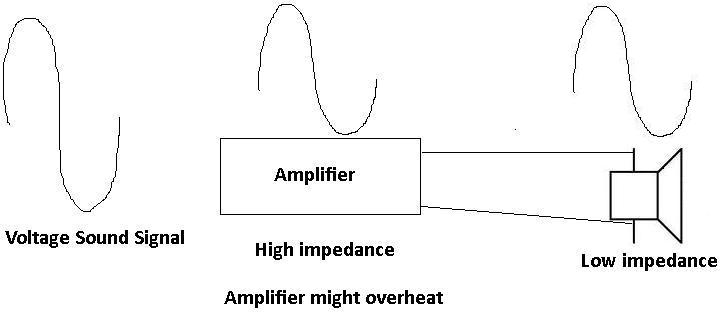What is Speaker Impedance?

All speakers come with a rated impedance.
Speaker impedance is the amount of resistance that a speaker offers to electrical current that flows through it.
The most common value impedances of speakers are 4 ohm, 8 ohm, 16 ohm, or 32 ohm.
A
speaker is often referred to by its impedance, such as an 8 ohm speaker.
So why is Speaker Impedance important?
Speaker impedance importance comes into play when using the speaker with other components. In order to speakers to work effectively and play out the proper sound, it must be matched in proportion with other electrical components. The most commonly used component being the amplifier.
When you use a speaker in a circuit, it should have an impedance rating that matches the minimum impedance rating that the amplifier hooked up to the speaker can drive. It's always best when the impedance ratings of the speaker and amplifier match.
If you use a speaker with higher impedance than the amplifier can drive, you won't
get the maximum amount of sound.

A voltage divider works by dropping more voltage across parts of a circuit with higher impedance and lower voltage across parts of the circuit with lower impedance, according to ohm's law. You see see the large original voltage sound signal on the left. This voltage signal then gets divided up between the amplifier and speaker. If the amplifier has a lower impedance than the speaker, the sound voltage signal will not get dropped fully across it. Therefore, it will not receive a large enough signal to amplify out to the speakers. Thus, the speakers will only play a small amplified signal and maximum sound will not occur.
If you use a a speaker with lower impedance than the amplifier drive, you might
overheat the amplifier.

This concept is again based on the voltage division rule. To the left again is the original sound signal to be amplified and played out through the speakers. This voltage signal will be divided between the amplifier and the speaker. If the impedance of the amplifier is higher than the impedance of the speaker, the amplifier may receive too high of a voltage signal. This can cause the amplifier to overheat.
You can find this impedance rating of the amplifier in the datasheet on the supplier's
website.